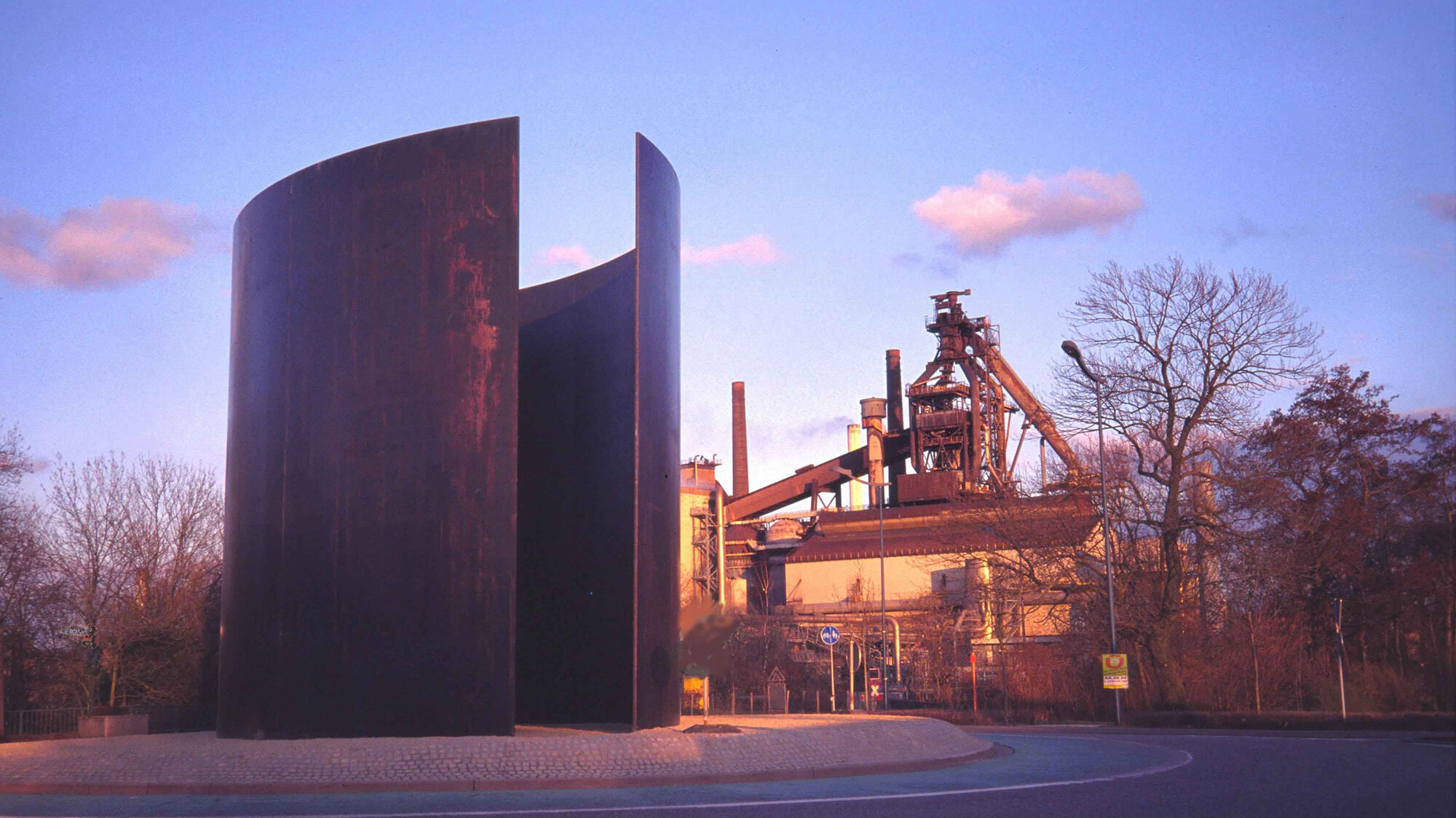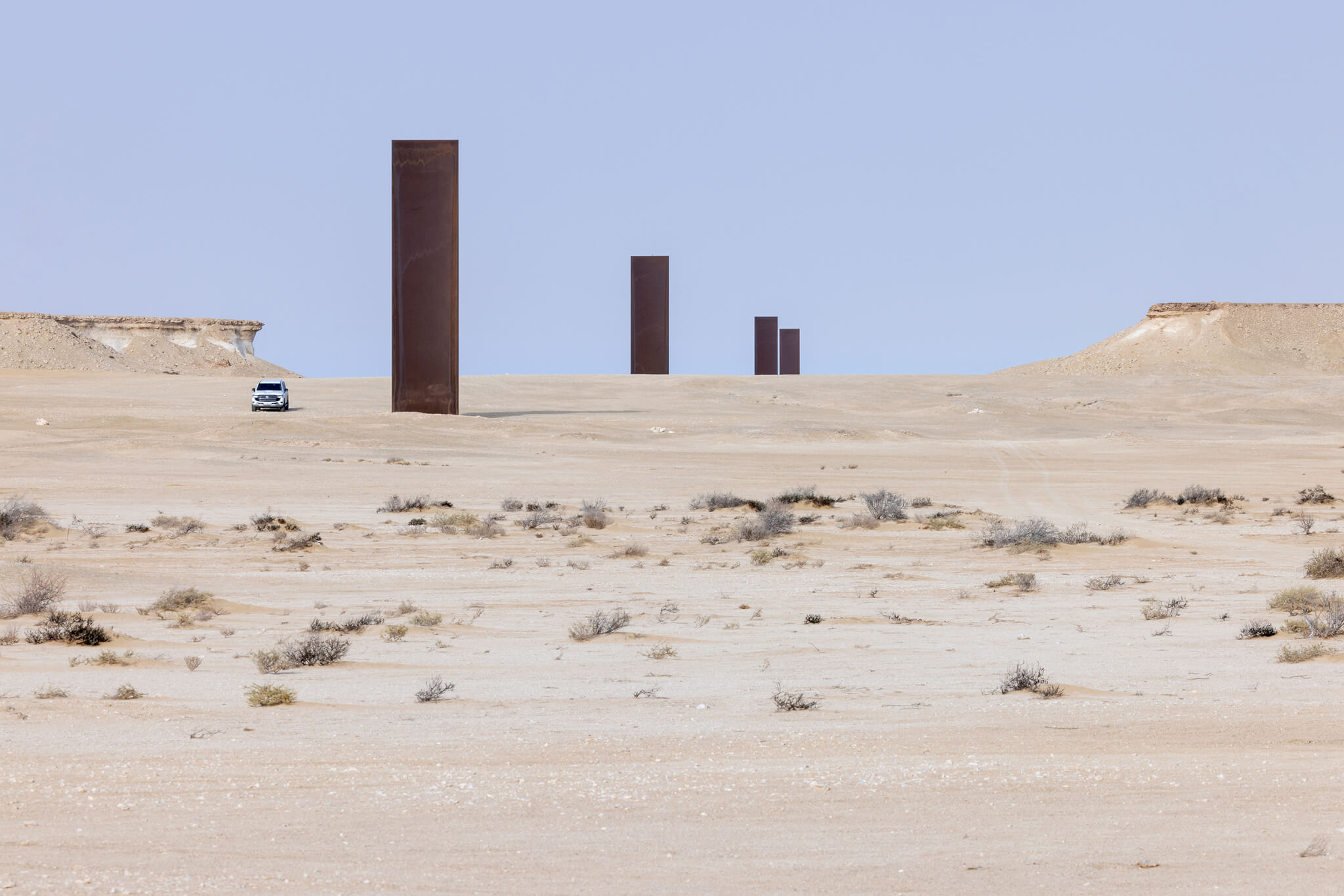Richard Serra died on Tuesday, March 26, at his Long Island home in Orient, New York, at age 85. News of the canonical sculptor’s passing was confirmed to The New York Times by Serra’s lawyer, John Silberman, who said the cause was pneumonia.
Serra never formally practiced architecture, but architects religiously followed his work. Whether at MoMA, or Dia Beacon, the five-letter name “Serra” became synonymous with heavy steel slabs that torque and bend in mind-boggling fashion. His works grace the entrances and plazas of notable buildings across the country and around the world.
Serra and Frank Gehry famously worked together on a monumental sculpture installation at the Guggenheim Bilbao, The Matter of Time, together with engineering wizard Rick Smith. Serra also joined Peter Eisenman in a competition to design Berlin’s Holocaust Memorial. Serra and Eisenman designed the winning submission together, but Serra left the project team in 1998 “for personal and professional reasons” that “had nothing to do with the merits of the project,” he said. In 2014, Serra became the first artist to receive The Architectural League of New York’s President’s Medal. More recently, Serra collaborated with Thomas Phifer on an installation at the Glenstone Museum.
One of Richard Serra’s most contested projects came in 1981 when his sculpture, Tilted Arc, was commissioned by the General Services Administration (GSA) and installed in Manhattan’s Federal Plaza at Foley Square. The artwork—which consisted of a 12-foot-tall, 120-foot-long steel slab that weighed 15 tons—was removed in 1989, sparking controversy. Serra’s work was nothing if not provocative.

Serra was born in San Francisco on November 2, 1938, into a working class family. His mother was a Jewish émigré from Odessa, and his father was a pipe fitter at a California shipyard during World War II. The materials he worked with, mostly steel, had an obvious impression on the late artist. At age 15, Serra himself took on part time jobs at steel mills throughout the Bay Area.
The artist enrolled for one year at University of California, Berkeley, but then transferred to UC Santa Barbara. Later he was awarded a scholarship to study at the Yale School of Art. A Yale travel fellowship and Fulbright grant brought Serra to Paris. It was there where he wedded Nancy Graves, a sculptor he began dating at Yale. It was also in Paris where he and Graves befriended Philip Glass. Serra had his first solo show in Rome at Galleria La Salita, entitled Live Animal Habitats.
Serra and Graves moved back to New York, but their marriage ended in 1970. Afterwards, Serra dated Joan Jonas, the video and performance artist (who currently has a retrospective at The Drawing Center in Soho). The year of Serra’s divorce, he helped his friend Robert Smithson complete Spiral Jetty in Utah. Four years later, there was a controversy when a laborer was killed while installing one of Serra’s steel slabs at the Walker Art Center in Minneapolis. The death was attributed to the fault of a crane operator, who hadn’t followed proper rigging instructions.
In 1981, Serra married the art historian Clara Weyergraf, the same year that he completed Tilted Arc. Federal employees and some members of the public lambasted the sculpture, while the art literati praised it.

Tilted Arc inspired an exhibition four years after its completion at Storefront for Art and Architecture, entitled After Tilted Arc, curated by Thomas Finkelpearl with contributions from Michael Sorkin, Sanford Kwinter, and others. Sorkin had mostly critical things to say about it. In The Village Voice, the architecture critic said Tilted Arc “heightens the alienation effect of a hideous modern office building and further orchestrates the processional regimentation of the office worker to and from work. It is a physically abusive, hateful piece of art.”
After its completion, a judge named Edward Re campaigned to have the $175,000 sculpture removed. At a public hearing in March 1985, 122 people voted to relocate the sculpture, and 58 voted to preserve it in situ. Serra was outraged: He said the work was site-specific, therefore, if it was to be moved, it would change the work entirely, and that he’d remove his own name from it upon its relocation. “I don’t think it is the function of art to be pleasing,” he commented at the time. “Art is not democratic. It is not for the people.” The GSA replaced Tilted Arc with a sculpture entitled Triumph of the Human Spirit by Lorenzo Pace. Later, the plaza was redesigned by Martha Schwartz Partners to include a swirling set of park benches and topiary mounds.
In his later years, Serra increasingly worked in dialogue with architects, including Gehry, Eisenman, Phifer, I. M. Pei, and others. He also diversified his output by incorporating prints, films, and videography into his corpus. Between the 1990s and his death, he circulated between his homes in Manhattan, Long Island, and Nova Scotia.

One of Serra’s largest works came late in his life when East-West/West-East (2014) was installed in the Qatari desert. Four steel plates are installed in the gypsum-sand landscape with their tops perfectly level to each other and aligned with the low nearby outcroppings. A visit “conjures the great age of Earth-works,” according to Hal Foster. Serra himself was pleased with the piece. “This is the most fulfilling thing I’ve ever done,” he said. “It’s a piece that I’d really like to be seen.”
Serra is survived by his wife, Clara Weyergraf. AN plans to follow up this news with a set of remembrances.











